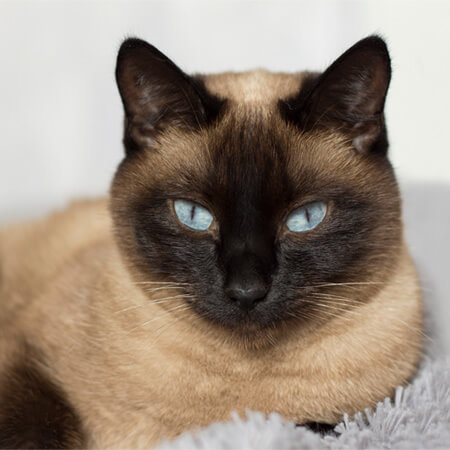History of the Thai cat
The history of the Thai cat is closely interwoven with that of the Siamese cat. Basically, Thai cats are reminiscent of Siamese cats from the 1950s. For this reason, they’re also referred to as “Classic Siamese” or “Traditional Siamese”. These days, the cats we know as modern Siamese have an imposing, elegant appearance: their body is long, slender and very supple. In fact, over the years, Siamese cats have become increasingly elongated and angular in terms of their silhouette. In contrast, Thai cats, which are also known in Thailand as “moon diamonds”, look more like the original stock of their ancestors. Back to the roots!
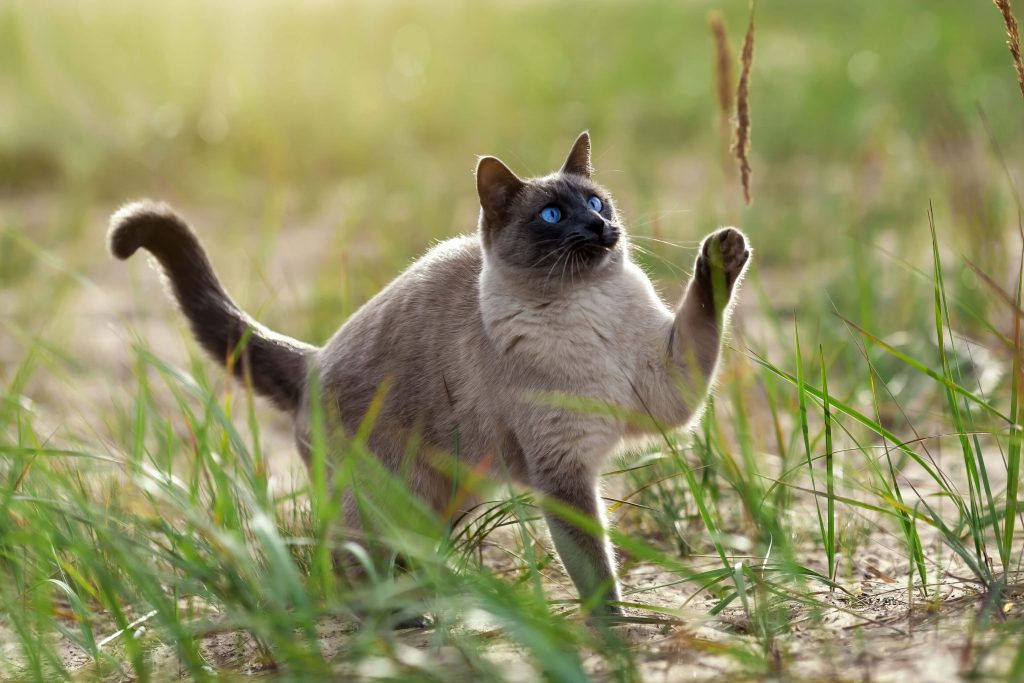
Appearance of the Thai cat
In terms of their appearance, the Thai cat resembles the Siamese in many ways. For example, both breeds are medium-sized. However, the Thai cat has a strong, bulky build that appears slightly more compact than the Siamese with its delicate bone structure. The Thai cat’s various shapes and contours are generally rounder and less angular than those of the modern Siamese. With its long and athletic body, the Thai cat is by no means an awkward-looking feline. Quite the contrary! Plus, just like the Siamese, Thai cats stand out from all other breeds due to their coat pattern.
Size of the Thai cat
How big does a Thai cat get? Thai cats are usually considered to be fully grown at 12 months. At this point, they will have reached their final size and be full-fledged adults. With an average shoulder height of 30 to 35 cm – as measured from the front paws to the highest point of the shoulder blade – Thai cats are a medium-sized breed of cat. Males of this breed are often a tad taller than their female counterparts.
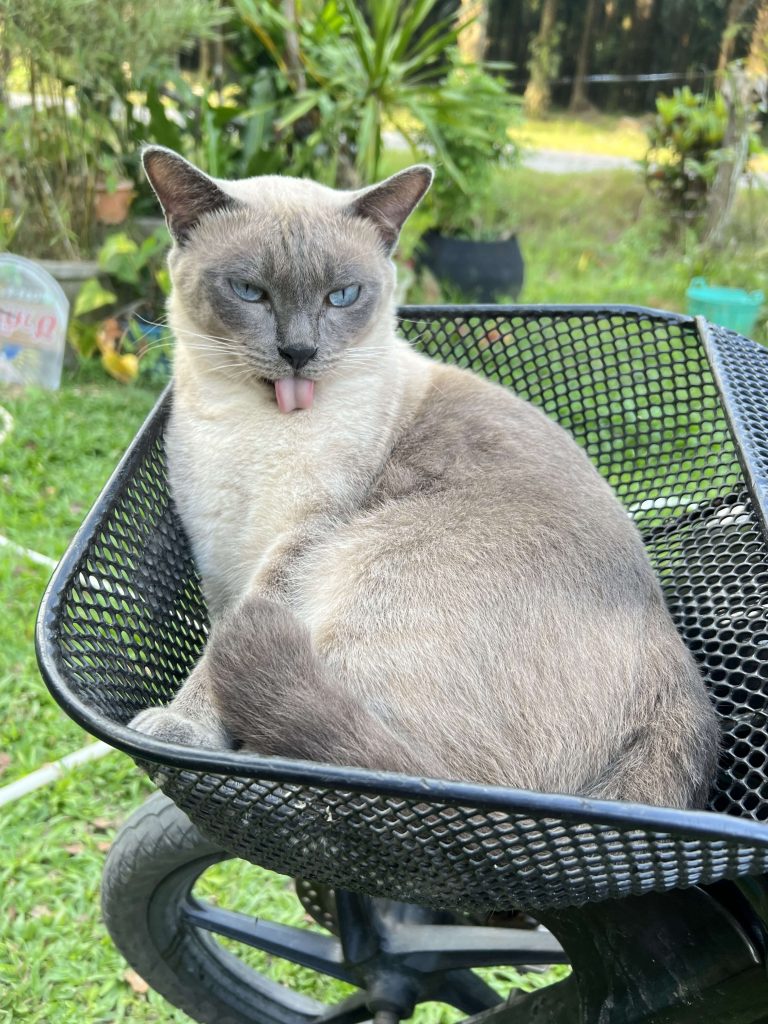
Weight of the Thai cat
How much does a Thai cat weigh? According to the relevant TICA breed standard, females of this breed should weigh roughly 3 to 4.5 kg. Thai males are somewhat stockier than their female counterparts in terms of build and bone mass, which makes them heavier. The males thus bring an average of roughly 4 kg to 5 kg to the scales.
Coat of the Thai cat
The short and shiny coat of the Thai cat lies close to their body. It is fine, yet beautifully smooth and very dense. It feels silky soft and pleasant to the touch. Thai cats have little undercoat, which makes grooming quite easy. Thailand has a relatively warm climate, which is exactly the environment this cat’s coat is made for. A coat without woolly hair is not ideal for a very damp and cold climate. Going out in winter without a shirt? Better not!
Coat colour of the Thai cat
The coat of Thai cats can have different colours. Just like in Siamese cats, unnatural colours can also occur in Thai cats. Basic colours such as blue, chocolate, cream, lilac, red or seal are common in this breed. Also like the Siamese, the Thai cat is a pointed cat: this means that the base colour of their coat appears “diluted” while the points – that is, the extremities of the cat’s body – are much darker.
Coat length of the Thai cat
Thai cats have a short, fine coat that is both luxuriant and cuddly. It literally invites you to stroke it! Cats of this breed have relatively little woolly hair, which means that grooming Thai cats is quite straightforward and requires relatively little effort except during shedding season.
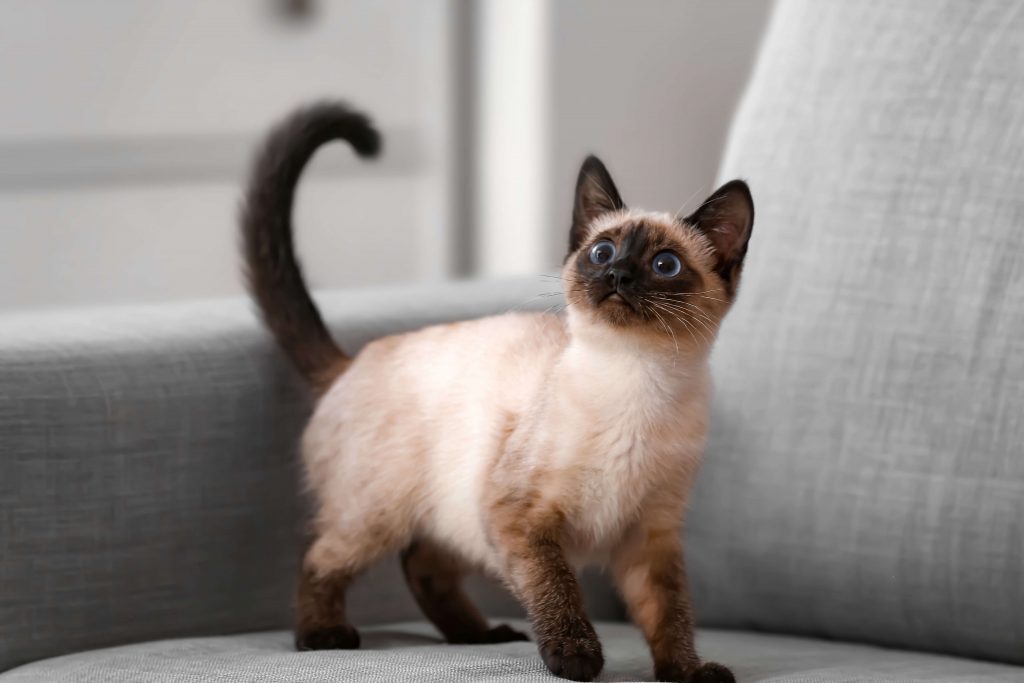
Coat pattern of the Thai cat
The point pattern is typical of Thai cats. The shaded coat with its light and dark markings is similar to that of Siamese cats. These markings, which are called points, are located on the head and extremities, just like in the Siamese. The coat of Thai cats becomes darker only in the course of time, with the contrast ultimately developing on their face, ears, legs and tail. It’s almost as if Thai and Siamese cats put on a kind of mask as they get older.
Eyes of the Thai cats
Thai cats have beautiful shiny eyes. As soon you gaze into these expressive, aquamarine-blue eyes, you’ll understand why these cats are called “moon diamonds” in Thailand. You’ll get the feeling you’re looking at sparkling stars twinkling in the night sky! Their upper eyelid is shaped like an almond, while the lower eyelid has a rounder shape. Like most Siamese cats, Thai cats have blue eyes, with the exception of the Thai Lilac, which has large green eyes.
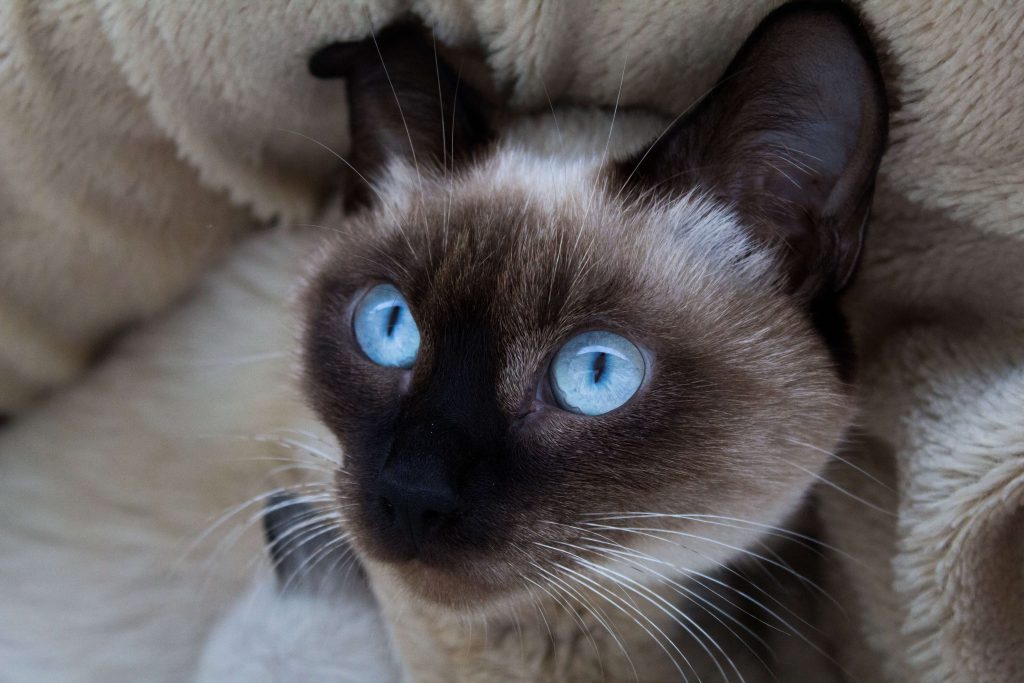
Special features of the Thai cat
One special feature of the Thai cat is that it remains true to the original breed standard. At first glance, you might think you’re looking at a Siamese cat, but if you take a closer look, you’ll realise it’s actually a different species, an independent genus with characteristics that set it apart from the modern Siamese. One distinguishing characteristic, for example, is the shape of their head: unlike the modern Siamese, which has a wedge-shaped head, the facial features of Thai cats are round. In the United States, Thai cats are therefore often referred to as “appleheads”.
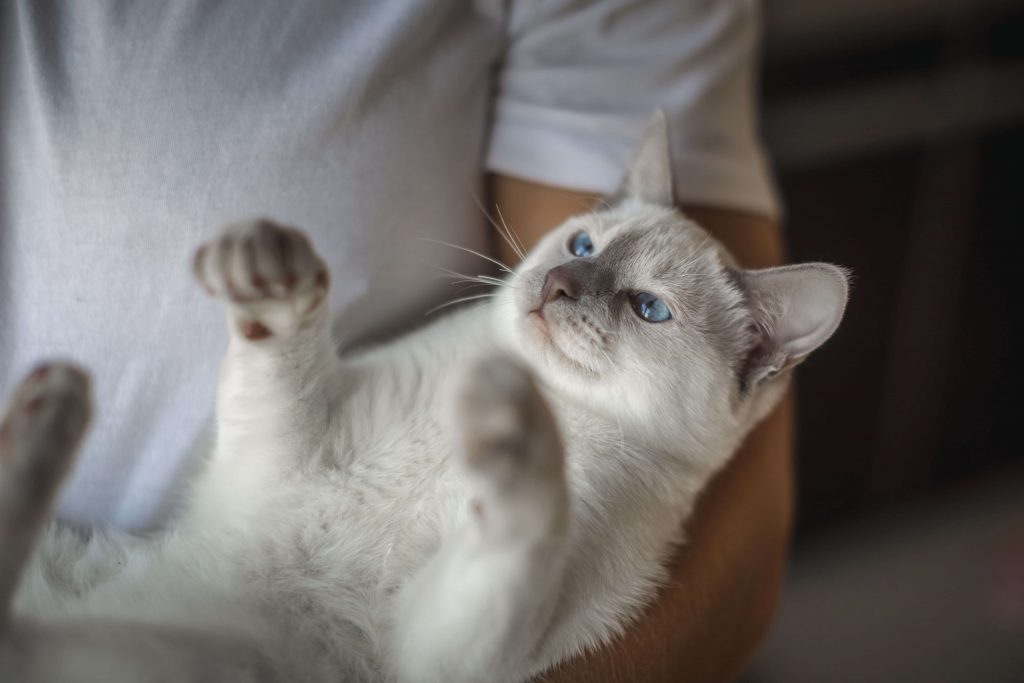
Key attributes of the Thai cat
Thai cats are known for being rounder than modern Siamese cats, which have long, slender and very supple bodies. Thai cats have a delicate build, but they’re still very athletic. In contrast to other breeds, Siamese cats have a Roman profile, that is, a long nose that runs straight up to the forehead without a kink or curve. In contrast to that, the shape of a Thai cat’s head is more rounded and the muzzle and nose are short. In Thai cats, the forehead and cheeks are emphasised.
Character of the Thai cat
The character of Thai cats is similar to that of Siamese cats. Thai cats have very strong personalities; they demand attention from everyone around them, but they’re also very affectionate to people they’ve welcomed into their hearts. Thai cats are known for their ability to adapt perfectly. Representatives of this breed are lively and entertaining. They’re also famous for their talkative nature. In fact, they enjoy having animated conversations in all tones with themselves and their flatmates.
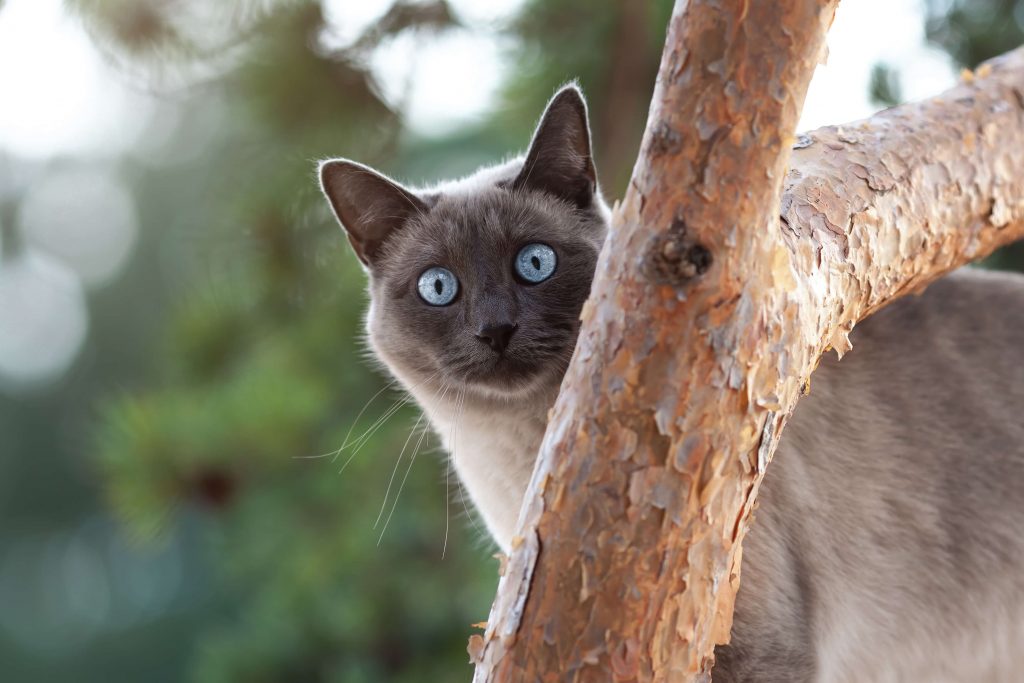
Price of the Thai cat
What are the normal prices for a Thai cat? The average cost of a Thai cat is between €700 and €1,200. Prices can vary greatly depending on the breeder as well as on the cat’s age and sex. Membership in a pedigree cat association is usually a good indication of quality, but unfortunately not a 100% guarantee that you’re dealing with a reputable breeder. In other words, always make sure to do your research before buying a cat and steer clear of “low-priced” pedigree cats. The best thing to do before you buy a cat is to go and look at the cats yourself and get to know the breeder personally!
Breeding of the Thai cat
The breeding of the Thai cat can be attributed to American breeders who remained faithful to the “Traditional Siamese” for decades. Over the years, a new type of Siamese cat featuring increasingly graceful silhouettes became established at shows, while Traditional Siamese cats were pushed increasingly into the background. Old-style Siamese cats eventually disappeared completely from the scene. As they didn’t correspond to the breed standard of today’s modern Siamese, they were no longer bred under the name “Siamese”, but instead as the independent breed called the “Thai cat”.
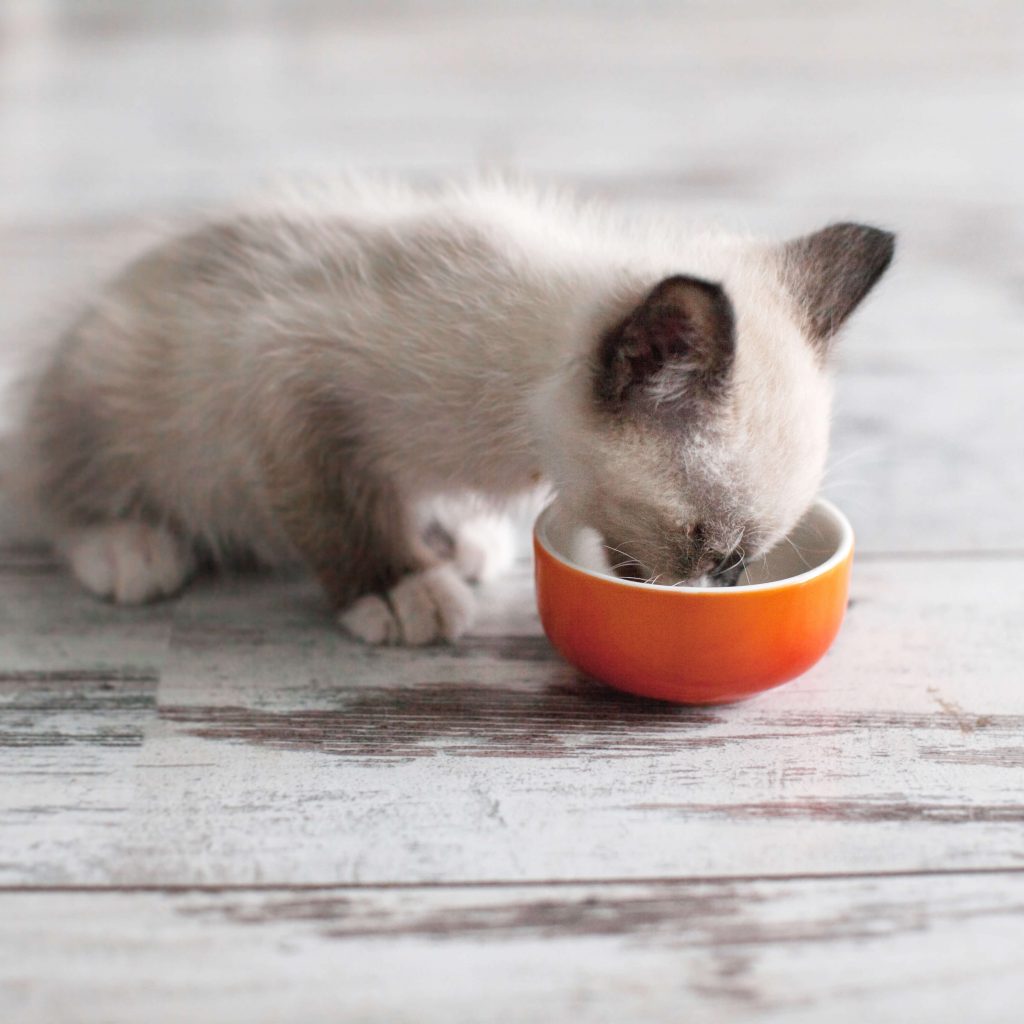
Things to know about keeping and caring for Thai cats
Like all cats, Thai cats need regular care. But this doesn’t just mean brushing their fur on a weekly basis. From time to time, your furry friend’s ears, eyes, teeth and claws are going to need some special care too. People also often forget to check their cat’s skin on a regular basis. And don’t forget: When Thai cats go outside, they’ll not only be exposed to the weather conditions and dangers of the outside world, they might also bring home some uninvited guests: parasites!
The Thai kitten
After they’re born, Thai kittens still have very light fur. They only acquire their characteristic dark point markings as they get older. After about 36 months, the points will have fully developed. However, this might not be what they always look like, because the colour of a Thai cat’s fur can still change slightly. For example, if Thai cats live in warmer climates or rarely spend time outside, their coat will usually have a slightly lighter shade than the coat of Thai cats who are exposed to less heat because they regularly venture out into the great outdoors.
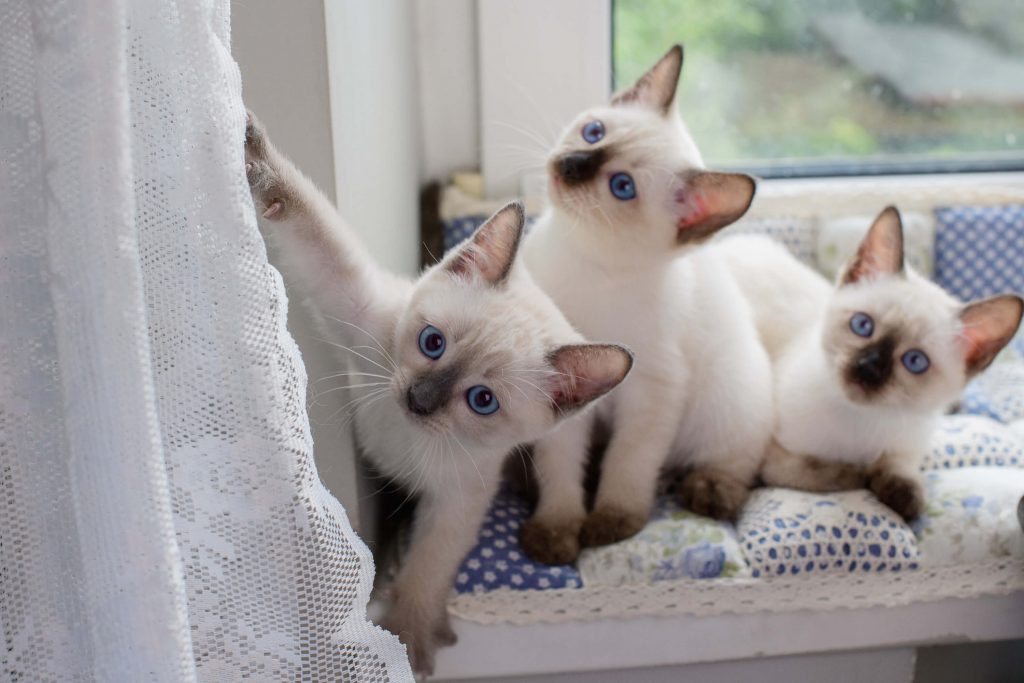
Typical diseases of the Thai cat
Gangliosidosis is one of the typical diseases of Thai cats. Gangliosidosis is a rare neurological disease that can be passed on from one generation to the next. In cats affected by this disease, a genetic defect causes a metabolic disorder in the cat. The genetic defect leads to an enzyme defect, which in turn leads to errors and interruptions in the breakdown and accumulation of certain substances. As the disease progresses, the cat starts to display neurological symptoms such as disorientation and coordination problems. At some point, animals affected by this disease will no longer be able to move or eat.
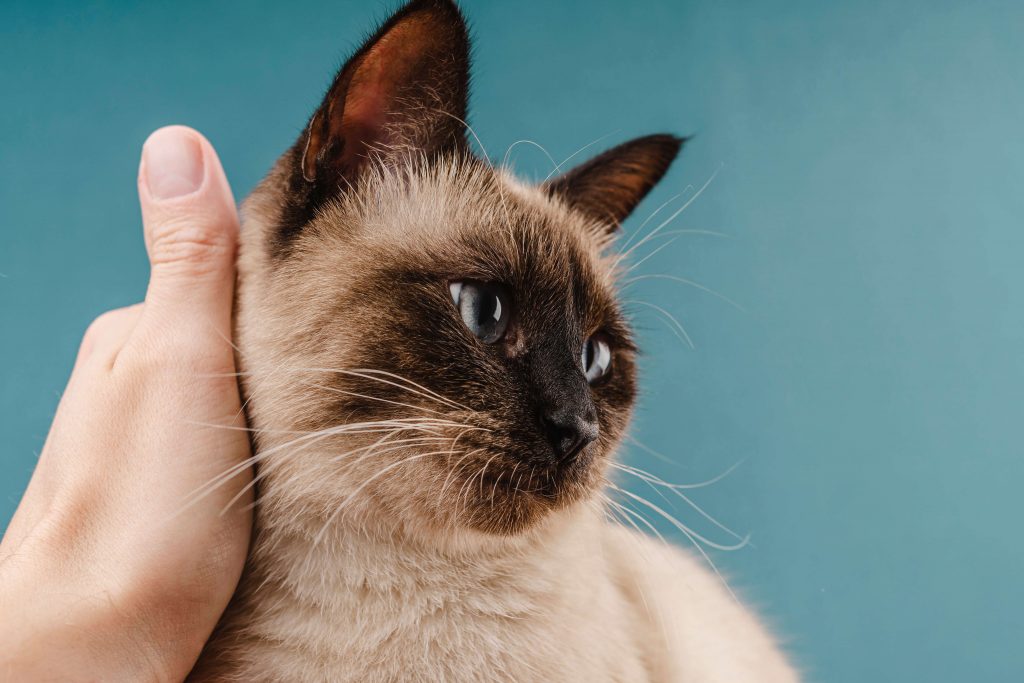
Life expectancy of the Thai cat
Thai cats have an average life expectancy of 15 to 17 years. And don’t forget, 15 cat years are the equivalent of 76 human years! This is quite a proud age for a feline. Still, it’s never possible to say definitively how long a Thai cat will live. Every Thai cat ages, but each in its own way and depending on many factors. One thing is certain, however: only those furry friends who are in good physical and mental shape will be happy cat buddies to their humans for a long time!
Frequently asked question about the Thai cat
Depending on the breeder as well as on the ancestry, gender and age of the cat, the price for a Thai cat can range between €700 and €1,200 on average. *
*Source: Thai Katze: Gewicht, Farben, Charakter (wamiz.de), Last updated: 30 Aug. 2023
Thai cats have an average life expectancy of 15 to 17 years. But it’s impossible to say for sure how long a Thai cat will live. Every Thai cat ages, but each one ages differently depending on many factors, including whether the cat is in good physical and mental shape.
Thai cats look like Siamese cats, and both breeds are point cats. Thanks to their strong muscles, Thai cats appear somewhat more compact than those graceful modern Siamese with their delicate bone structure. Overall, the shapes of Thai cats are more rounded than those of the Siamese.
Thai cats will only reach their final size when they’re adults. With an average shoulder height of 30 to 35 cm – as measured from their front paws to the highest point of the shoulder blade – Thai cats are medium sized.
Thai cats are only fully grown when they’re just over a year old. At 12 months they will have reached their final weight. While females of this cat breed weigh around 3 to 4.5 kg, males are somewhat more compact and heavier at around 4 to 5 kg.
Thai cats can be both indoor and outdoor cats. However, like other short-haired breeds, they might be a little more sensitive to the weather, primarily as they have very little undercoat to keep them warm when it rains and snows outside.
The Thai cat is originally from Thailand. Over the years, as the modern Siamese cat with its more graceful silhouette became increasingly popular, the breeding of Thai cats was the work of American breeders who remained loyal to the original type of Siamese cat.
Thai cats are intelligent, affectionate and playful. These furry friends are very clever and enjoy all types of challenges. They need a variety of activities and toys to keep them busy and engaged!
Any cat that’s also a bundle of energy is suitable for the Thai cat. These lively cats won’t be very interested in boring felines who want to spend the whole day on the couch. Thai cats prefer to have active companions who like to romp around with them all day long.
Thai cats are very active. Representatives of this breed are lively and entertaining. Like Siamese cats, they enjoy being the centre of attention. And they’re famous for their talkative nature. Thai cats like to have lively conversations in all tones with themselves and their roommates.
Thai cats should not be kept alone as only cats. They really enjoy having other cats around them. But they definitely have strong personalities, so the other cat should be able to meet them at eye level intellectually. Otherwise, what might happen is that the other cat ends up playing second fiddle to the Thai cat.
Thai cats are very sociable. They’re going to need four-legged roommates around to play with. Otherwise, Thai cats will get lonely very quickly, and being alone is not good for their souls. Still, the chemistry needs to be right. Just like with us two-legged friends, every cat’s tastes and preferences can be very different.
Gangliosidosis is one of the typical diseases of Thai cats. Gangliosidosis is a rare neurological disease that can be passed down from one generation to the next. A genetic defect leads to interruptions in the breakdown and accumulation of certain substances.
One of the key attributes of Thai cats is their various rounded shapes. Whereas the body of a modern Siamese cat is long, slim and with a Roman profile, the head shape of a Thai cat is more rounded. In Thai cats, the muzzle and nose are short and the forehead and cheeks are accentuated.
The main difference between Thai cats and Siamese cats is their body structure. Thai cats are reminiscent of the Siamese cats of the 1950s. Over the years, the modern Siamese cat became increasingly slimmer and finer in terms of their silhouette. Thai cats, on the other hand, still look the same as their ancestors did.

